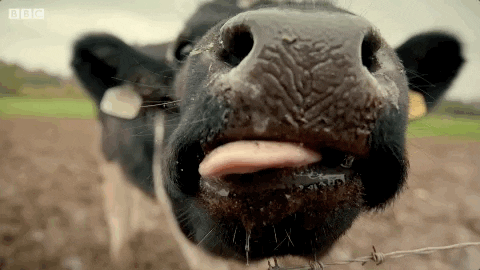
Mateman partnership deploys CowToilets on their dairy farm
The potty moves up and down at the back of the cow. The cow starts to urinate and the urine falls into the potty. Meanwhile, the cow stands eating concentrate feed. At the dairy farm of the Mateman family in the Gelderland village of Vragender, six new feeding boxes with cow toilets have been installed in the barn since March. Read all about how the Mateman family uses CowToilets here.
Mateman cows often urinate on cow toilet
Seeing a cow urinate in a potty for the first time takes some getting used to; the cows themselves don't seem to care. “It was a combination of factors that made us decide to invest in feed stalls with cow toilets,” Henk Mateman says. He farms in partnership with wife Liesbeth and son Bram. Together they keep 175 Fleckvieh dairy cows and 80 head of young stock. They have about 60 hectares of land in use.
'With that, we have quite an intensive farm and therefore have to dispose of manure. That is already one of the reasons that make cow toilets interesting for our farm' says Bram Mateman. 'Separate collection of urine can significantly reduce our manure disposal costs. Having slurry collected carries a hefty price tag. It's different with pure urine. That is a valuable fertilizer with nitrogen and potassium. Gardeners are willing to pay for it and can buy it at www.urinebank.nl.'
However, manure disposal costs were not the first reason for Mateman to think about cow toilets. Henk Mateman: 'It started with an optimization plan that Bram made during the Middle Level Dairy Farming course in Oentsjerk.' 'Bram hung cameras in the barn and made 48-hour recordings at the concentrate feed stalls.'
The system records everything, such as which cows urinated in the toilet when and how often.
'The footage showed what we somewhat knew: a lot of commotion around the feed stalls,' he continues. 'We regularly saw rank-high cows violently expelling heifers from the concentrate feed box. That got us thinking. Also because the feed stalls were now 33 years old. Moreover, we only had four feed stalls for 160 cows; that was very tight. The vet advised us, when buying new feed mangers, to choose a model with a locking gate so that cows cannot chase each other out of the manger'.

How a cow toilet works
A cow toilet collects urine from a cow while she is eating in the concentrate box. The device makes cows urinate in a pot by stimulating the so-called urinary nerve. It is located under the cow's skin at the back between vulva and udder. When the cow starts to urinate, the cow toilet collects the urine and pumps it to a separate urine storage tank. In this way, already half of all urine can be collected when the cows are in the barn. A cow urinates about 25 to 30 liters per day. If things go well, nearly 15 liters of that can end up in the cow toilet.

Operation of cow toilet is well secured
A plus for permittees is that the operation of the cow toilets can be easily monitored. 'The system records everything, such as which cow urinated in the toilet when and how often. We also know exactly how much total urine was collected in the silo. Tolkamp argues that ammonia reduction by separating urine and feces at the source is a natural process. “It works simply and there are no chemical additives involved.
At Mateman, the six new feed boxes with cow toilets have now been in use for a few months. The entrepreneurs are satisfied with how things are going. 'The peace and quiet in the barn is the biggest difference from before. We first let the cows get used to the feed boxes for a few weeks without using the cow toilets. Now they find it quite normal to pee in a potty. The amount of urine we collect per day grew steadily. Cows are also creatures of habit. They often start urinating even before they are stimulated.' The cows now go out to pasture twice a day for four hours. 'As a result, we catch slightly less urine; although, of course, manure and urine also remain separated in the pasture, so you don't have any ammonia emissions there either.'
The six cow toilets pump the collected urine to a manure cellar. 'We have a separate manure cellar under the feed alley that is not connected to the other manure stores. That worked out nicely. In that cellar we store the urine until it is collected. We have now collected about 30 cubic meters. Henk Mateman hopes that regulations will change in the future allowing them to use the urine on their own farm as a fertilizer substitute. 'Of course, it's strange that we have to dispose of such a beautiful manure product and buy fertilizer in return.'
Extra work the dairy farmers hardly have from the cow toilets. 'Once a week we spray the trays clean, that's all.
The taxman helps
A concentrate box with a cow toilet costs 25,000 to 28,000 euros per box, depending on the situation. 'About 1,000 euros per cow. That's a lot of money. If you only buy walk-through concentrate stalls, you also easily spend 10,000 to 12,000 euros per stall. 'We can recoup the extra costs for the cow toilet through manure disposal and precision fertilization, and hopefully also by being able to build a new barn with a traditional floor in the coming years,' says Bram Mateman.
'Fortunately, the tax authorities are also helping out. Because we can make use of MIA and Vamil, we can significantly reduce the tax bill for 2022.'
See how the CowToilet is used on several dairy farms here





